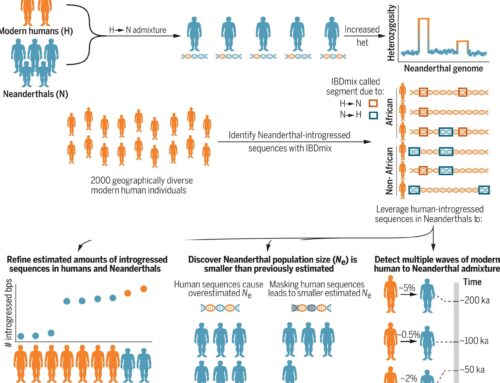Article originally appeared in Nature.
Transplanting human cells into animal brains brings insights into development and disease along with new ethical questions. In a darkened room in a laboratory in London, a group of students and researchers watch a clump of human brain cells settle into their new home: a living mouse brain. On a computer monitor next to a microscope, the human cells light up in flashes of simultaneous activity. Over time, the cells sprout new connections a few centimeters long, and form networks with each other. It’s captivating viewing for his students, says Vincenzo De Paola, who runs the lab at Imperial College London. “It’s all they want to do. I can’t tear them away,” he says.
 They have front-row seats to an unusual show. De Paola’s group is one of just a handful of labs able to study human neural cells at work in a live, developing brain — a system that is otherwise largely off limits for both ethical and technical reasons. “We cannot study these processes as they unfold in a fetal human brain,” he says. “Instead, we wanted to watch human cortical neurons mature and form active networks in a live animal.”
They have front-row seats to an unusual show. De Paola’s group is one of just a handful of labs able to study human neural cells at work in a live, developing brain — a system that is otherwise largely off limits for both ethical and technical reasons. “We cannot study these processes as they unfold in a fetal human brain,” he says. “Instead, we wanted to watch human cortical neurons mature and form active networks in a live animal.”
De Paola’s system is a specialized type of neural chimaera — an area of research that has expanded immensely in the past five years, sparking a debate about the ethics of blending human and animal brain tissue. Proponents say that such systems are necessary to manipulate live human neurons and are already yielding important insights into health and disease. For example, using neural chimaeras, scientists have found differences in how neurons develop and behave in Down’s syndrome and Alzheimer’s disease.
But others warn that such chimaeras represent an ethical grey zone, because of the potential to blur the line between humans and other animals, or to recapitulate human-like perception or cognition in an animal. Some researchers say these kinds of chimaeras should only be used if no other cell or animal model is appropriate. “Is this a really good model for answering a scientific question or are we pushing boundaries for the sake of it?” asks Naomi Moris, a developmental biologist at the Francis Crick Institute in London. Ethicists are asking at what point a collection of human neurons in another animal’s brain embodies something that deserves a unique moral status.
Although research using chimaeras — entities made up of cells from different organisms or species — has been going on for decades, these neural chimaeras broach new ethical territory. A 2021 special report on neural chimaera research by the US National Academies of Science, Engineering and Medicine (see go.nature.com/3pii9q5) flagged issues such as the possibility of endowing animals with new cognitive abilities or human disease symptoms that could be distressing. The committee advised that although current regulation of stem-cell and animal research was adequate, the field should be kept under close surveillance. The committee also encouraged the use of pilot studies and close monitoring of animals to identify any new or unusual behaviors.
There will be plenty for regulators to keep an eye on. Researchers are starting to consider going beyond transplanting a few isolated cells to creating chimeric animals with human brain regions. Studies that transplanted human brain stem cells into monkeys’ brains helped to launch a 2018 clinical trial testing whether human brain stem-cell transplants can treat Parkinson’s disease. In 2019, Japan reversed a ban on government funding for research using human–animal chimeric embryos. In many countries, including the United States and the United Kingdom, research that mixes human brain cells or tissue with another animal’s brain is legally allowed, and can be government-funded with an extra layer of review. The United States prohibits government funding for human–animal chimeric embryo research.
Observers expect the field to be fast-moving. “We know it will be quickly evolving,” says Insoo Hyun, director of research ethics at Harvard Medical School in Boston, Massachusetts. READ MORE



